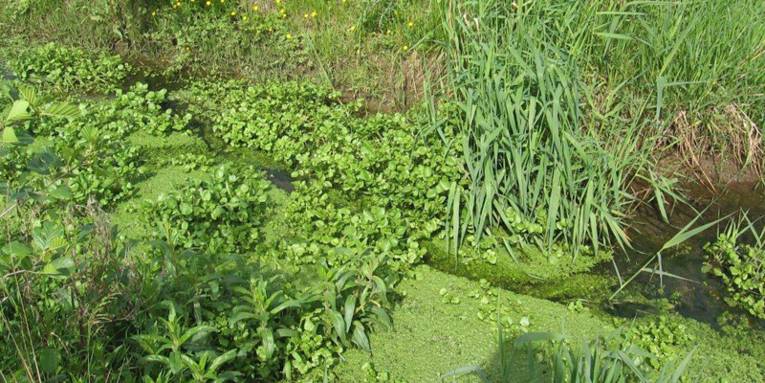Case Study
Renaturalization of the water canal Hirtenbach
Contact name
STADTENTWÄSSERUNG HANNOVER
Institution name
City of Hannover
Region & country
Lower Saxony, Germany
Summary
The renaturalization of the water canal Hirtenbach project was part of the larger city-wide initiative that aimed at the naturalization of different parts of the city’s drainage system including small trenches and streams. The initiative aimed to decrease the risk of floods, improve the water quality, protect the local flora and fauna from the pollution, as well as provide for an additional recreational area for the citizens.

Renaturalization of the water canal Hirtenbach
https://www.hannover.de/Kultur-Freizeit/Naherholung/Natur-erleben/Radfahren/Gr%C3%BCner-Ring/Wasserzeichen/Hirtenbach
Background of the project
Danger of flooding. Poor water quality. Flora and fauna affected by pollution.
Improvement of water quality.
Increased flood protection.
Improvement of rainwater management.
Increase of green spaces.
Increased preservation or restoration of ecosystems (local habitats for local species).
Reduction of biodiversity loss.
Increase of the existing number of species.
Improvement of habitability.
Improvement of access to the urban green space.
Increased opportunities for social interaction.
Higher number of recreational and exercise activities.
Solution and actions taken
Renaturalization of the water canal. The Hirtenbach, both on the territory of the city of Ronnenberg and on the territory of the city of Hanover, was redesigned in sections as close to nature as possible.
-Increasing the self-cleaning power of the water canal by the establishment of structurally rich water profiles through the creation of suitable rainwater retention basin and near-natural structures.
-Planting of trees; -Demolition of bank and embankment protection;
-Installation and greening of edge strips;
-Establishment of water maintenance plans for care and development while respecting the maintenance of a proper drain system;
-Continuous scientific studies of water quality (monitoring)
Other institutions or parties involved
The project was designed and implemented by the city of Hannover. It is a part of a larger long-term city initiative that aims at the renaturalization of the streams and canals (Gewässerrenaturierung) that are part of the city’s drainage system.
Results
At present, the Hirtenbach is barely perceptible from a distance. This will change with the growth of the alders on the shore area and thus also create a new landscape. High perennial corridors have already set themselves along the stream.
Challenges
Slowing down the flow rate to minimize flooding
Lessons learned
A study conducted in 2014 revealed that the restoration measures brought positive changes, but it was not enough to achieve a “good water status” defined by the European Water Framework Directive. Intensive care from silting and lush plant growth, wide margins, and the reduction of nutrients coming from the drainage and agriculture, need to be addressed.
Contact name
STADTENTWÄSSERUNG HANNOVER
Institution name
City of Hannover